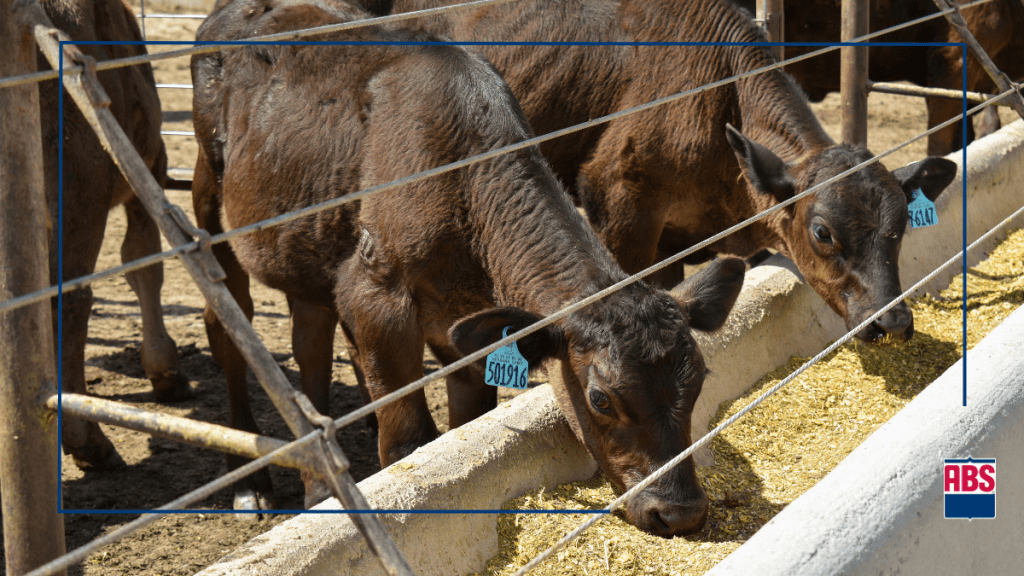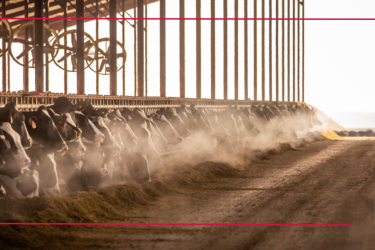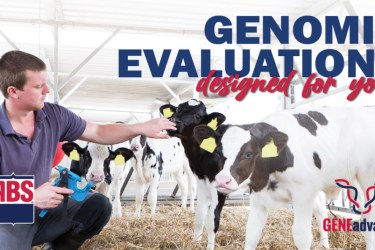Publish date: 6.23.23
Implementing a sexed and beef strategy has transformed the dairy industry. In fact, it is the common genetic management game plan that producers use globally. If you are not familiar with this approach, it hones in on reducing heifer inventories by using sexed semen on your best cows while optimizing return on the remaining pregnancies by using beef genetics to make a high-quality beef cross. Choosing the right genetics to deploy on the right females is a key factor in a successful sexed and beef strategy aimed at boosting profitability.
In simple terms, you breed your best cows to sexed and your lower genetic quality animals to beef genetics. But, several questions need to get answered to mine down to that simplicity. Right?
- How many heifers do I need?
- Who are the best cows genetically in my herd and the ones I want replacements from?
- Do beef genetics even make sense for my dairy and market opportunities?
- How do I pick the right beef sires to use?
- Should I use proven genetics?
All questions on topics that we hope to provide some answers to below.
Right-Size Heifer Inventories
With rising feed and other input costs, it is tough for dairy producers to continue to raise more heifers than they need. Dialing in your herd inventory may present a future opportunity for an additional revenue stream. In fact, fellow producers using a sexed and beef strategy to get trouble cows bred found this tactic to grow profit, save money, and reduce inventories.
If you are not already, here are some questions to think about when it comes to heifer inventories.
- How many is too many?
- What is your goal?
- Do you have a set of growth goals developed to monitor heifer development?
To learn more about right-size heifer inventories, read our article originally published in Dairy Herd Management.
Who Qualifies for Sexed, Conventional, or Beef Semen
On some dairies, you will see sexed, conventional, and beef semen in a herd’s program as genetics continue to advance and strategies evolve. A question normally asked revolves around how farmers determine which cows get which product type. As we just discussed, the first step is determining how many heifers need to be kept.
Once that question is answered, producers can dive into thinking about strategies. The next step is identifying the genetically superior females in your herd are which depends on how much of an investment you make in either genomic testing or analyzing pedigrees and genetic data. TA simple strategy using genomic testing would be to breed the top percent of your herd to sexed semen, the bottom to beef genetics, and the middle to conventional semen. While this practice is seen in the industry, most producers are reducing the use of conventional semen and using sexed genetics and beef semen to make each calf more valuable.
To learn more about determining which females get bred with which product, read our blog on determining who qualifies for sexed, conventional, or beef semen.
How to Choose the Right Beef Sires
There are four key factors to consider in choosing beef sires that will not compromise reproduction in your dairy but maximize return on the beef cross calves you created. We know that genetics, fertility, and calving traits all drive profitability. And we know that growth, feed intake, and carcass quality are all main profit drivers within the beef supply chain. This means, as a dairy producer, you need to focus on conception rate, calving ease, carcass quality, and cost of gain when selecting beef sires to use on your operation.
Because we create more beef cross calves than ever before and competition increases, the need to differentiate yourself has never been greater. This means you need to keep the above traits top of mind as you push to stand out in the crowd.
To learn more about choosing the right beef genetics, read our blog about choosing the right beef sires.
Are Beef Genetics Right for This Dairy
Choosing to employ beef genetics in your operation can seem like a complicated decision. In the end, when implementing beef genetics, the outcome should be about creating beef cross calves that benefit a dairy’s bottom line because they are demanded by the beef supply chain. With increased competition, it is key to use a verified program for beef genetics and work with a company that shares a similar vision on genetic progress.
Having a detailed plan is vital to be able to execute a sexed and beef strategy successfully. To help create this plan, producers need to ask themselves these three general questions:
- How many replacements are needed?
- What is the herd’s reproductive performance?
- What are the cost/income opportunities?
To learn more, read our blog about determining if beef genetics are right for this dairy.
No Bull – Proven Genetics Matter
There are benefits of looking beyond specific breeds in your sire selection for a sexed and beef strategy. Today, proven bull genetics are looked to as dairy producers want a breeding program they can count on. Taking breed type out of the conversation, experts across the industry still heavily emphasize that genetics continue to be key even in beef sires.
Dairy producers must pay attention to specific profit driver traits at both the dairy and beef supply chain levels. For selecting proven beef genetics, it is important to look at how the sires will improve terminal carcass traits in the results beef cross calves. The top-end beef cross calves can now perform well in feedyards and continue to be highly demanded by the supply chain as they are consistent, healthy, and obtain predictable performance. These are the type of beef cross calves you want to create from your sexed and beef strategy.
To learn more, read our blog on why proven genetics matters even for beef.
A sexed and beef strategy is not new, but focusing on herd segmentation and choosing the right genetics to deploy on the right females is a moving target that takes planning. That is why we suggest drafting your Winning Game Plan with ABS! By applying this plan, dairy producers around the world have experienced unbeatable, step-changing genetic progress. They are maximizing profitability from all females in the herd with a Sexcel and Beef InFocus™ strategy.
Uncover future possibilities for increased profits by contacting your ABS Genetic Advisor to discuss the Winning Game Plan or complete this form below.






